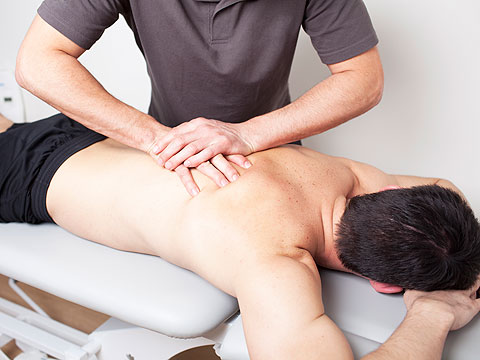With the wealth of over-the-counter (OTC) pain medicines—or analgesics—available today, it seems that quickly getting through those aches and pains has never been easier. But are you sacrificing your safety for quick relief? Despite the fact that misuse of these over-the-counter pain medications can cause dangerous—even life-threatening—side effects, studies show that misuse is common. In fact, some people may be misusing nonprescription pain relievers without even knowing it. Make sure you're not one of them.
The nonprescription analgesics available today are generally safe when used correctly. So when you feel an OTC pain reliever is the best way to alleviate your aches, keep the following tips in mind to avoid inadvertently putting your health at risk.
Using pain pills safely
There are a growing number of pain relievers in a range of strengths and formulations that are available without a prescription. But despite the wide availability, do not underestimate their potency. These are serious drugs that should be approached with caution. To use pain pills safely, follow package instructions closely, using the medication only at appropriate time intervals and for appropriate symptoms.
Know what's in your meds
Read the labels of all your medications to determine which contain analgesics. You may be surprised to find out how many medications contain a pain reliever. For example, most cold, cough and flu medications, as well as some sleep aids, contain analgesics. This means that if you have a cold and a headache and you take both a multisymptom cold reliever containing acetaminophen as well as a dose of pain-relieving Tylenol (also acetaminophen), you may be inadvertently exceeding a safe dose of acetaminophen. This type of scenario is a common cause of accidental overdoses.
Take only what you need
If you think that taking more than the recommended dose of an OTC pain medication will reduce pain more quickly, think again. Rather than increasing effectiveness, loading up on these medications increases your risk of serious side effects, such as ulcers or gastrointestinal bleeding.
It's easy to overdo it with OTC pain relievers, so start with the lowest dose recommended, and increase the dose only if necessary. Taking the smallest amount you need for pain relief helps safeguard your health. If the maximum recommended dose doesn't provide relief, don't go above it. Instead, talk to your healthcare provider for advice.
Be aware of bad interactions
Even properly administered OTC pain meds can cause problems if they are mixed with the wrong things. For instance, mixing alcohol with aspirin, ibuprofen or naproxen sodium increases the chances of stomach upset and bleeding. And when acetaminophen is combined with alcohol, it increases the risk of serious damage to your liver, even if acetaminophen is taken hours after excessive alcohol intake, such as for hangovers. The risks are higher if you have three or more drinks a day along with higher doses of acetaminophen. Also, avoid taking analgesics with milk or grapefruit juice; these beverages affect how the body absorbs the medication. Water is your best bet for washing down your medication.
If you have asthma, be cautious about taking NSAIDs. Nearly 10 percent of asthma sufferers experience adverse effects from these pain relievers.
Certain medications may not mix well with OTC pain meds. If you take prescription steroids, hormones or heart or pain medications, check with your healthcare provider or pharmacist before you take any OTC pain medication. Also, certain analgesics don't work well together. Although mixing aspirin and acetaminophen may actually have health benefits, combining aspirin and ibuprofen may pose complications.
Try to find the root of your pain
Nonprescription pain relievers provide quick comfort and relief to millions of people and have improved the quality of life for many sufferers of chronic pain. But if your use of OTC pain medications has become a mindless habit, and you'd like to understand your pain better, consider the following suggestions. Use these remedies as a complement to pain medication or as a replacement for it if you find the remedies do the trick on their own.
- Eye and neck strain can cause aches and pains. Take a break, stretch and/or remove your contact lenses.
- Fatigue can make you feel stiff and achy. Rest in a quiet, dark room with a cold compress on your forehead.
- Tension can cause muscle aches and headaches. Take a brisk 10- to 15-minute walk or a warm shower or bath. Or get a massage.
- Dehydration can cause headaches and fatigue. Make sure to drink plenty of water throughout the day.
- Overuse of muscles is a common source of pain. Apply ice or cold packs to the strained muscle as often as possible for the first 48 hours following the injury to reduce swelling and ease pain. Use heat before activities that irritate chronic injuries such as muscle strains.
Don't let your treatment make you older
Pain is a part of everyday life. It's your body's way of telling you that it needs attention. Many times, it may need something as simple as a glass of water, a snack or some relaxation; other times, an analgesic may be in order. When pain is chronic or you experience an unusual acute pain in your chest or abdomen, seek medical care.






